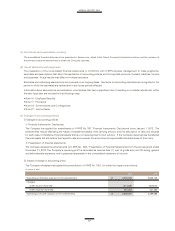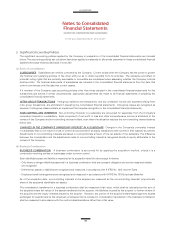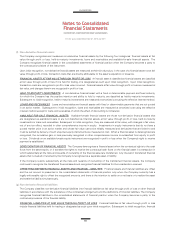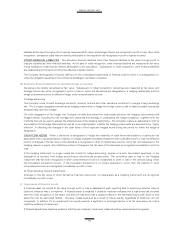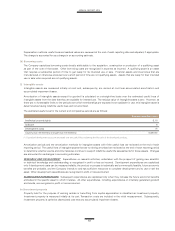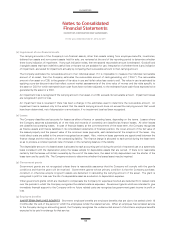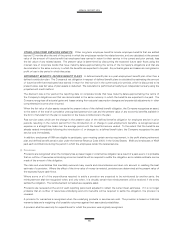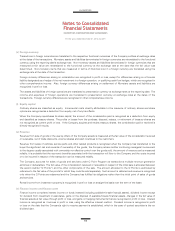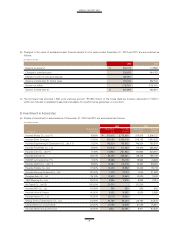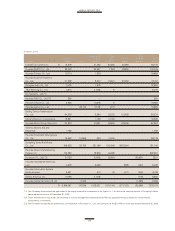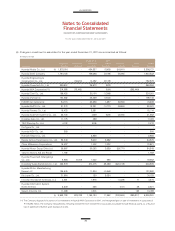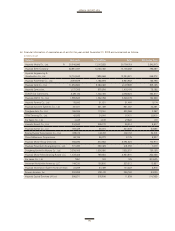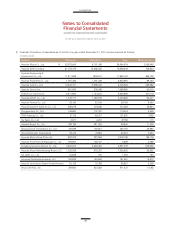Kia 2012 Annual Report Download - page 67
Download and view the complete annual report
Please find page 67 of the 2012 Kia annual report below. You can navigate through the pages in the report by either clicking on the pages listed below, or by using the keyword search tool below to find specific information within the annual report.
Finance costs comprise interest expense on borrowings, unwinding of the discount on provisions and losses on hedging
instruments that are recognized in profit or loss. Interest expense of borrowings is recognized as it accrues in profit or loss, using
the effective interest method.
(w)
Income taxes
Income tax expense comprises current and deferred tax. Current tax and deferred tax are recognized in profit or loss except to the
extent that it relates to a business combination, or items recognized directly in equity or in other comprehensive income.
CURRENT TAX Current tax is the expected tax payable or receivable on the taxable profit or loss for the year, using tax rates
enacted or substantively enacted at the end of the reporting period and any adjustment to tax payable in respect of previous years.
The taxable profit is different from the accounting profit for the period since the taxable profit is calculated excluding the temporary
differences, which will be taxable or deductible in determining taxable profit (tax loss) of future periods, and non-taxable or non-
deductible items from the accounting profit.
DEFERRED TAX Deferred tax is recognized, using the asset-liability method, in respect of temporary differences between the
carrying amounts of assets and liabilities for financial reporting purposes and the amounts used for taxation purposes. A deferred
tax liability is recognized for all taxable temporary differences. A deferred tax asset is recognized for all deductible temporary
differences to the extent that it is probable that taxable profit will be available against which they can be utilized. However, deferred
tax is not recognized for the following temporary differences: taxable temporary differences arising on the initial recognition of
goodwill, or the initial recognition of assets or liabilities in a transaction that is not a business combination and that affects neither
accounting profit or loss nor taxable income.
The Company recognizes a deferred tax liability for all taxable temporary differences associated with investments in subsidiaries,
associates and interests in joint ventures, except to the extent that the Company is able to control the timing of the reversal of
the temporary difference and it is probable that the temporary difference will not reverse in the foreseeable future. The Company
recognizes a deferred tax asset for all deductible temporary differences arising from investments in subsidiaries and associates, to
the extent that it is probable that the temporary difference will reverse in the foreseeable future and taxable profit will be available
against which the temporary difference can be utilized.
The carrying amount of a deferred tax asset is reviewed at the end of each reporting period and reduces the carrying amount to the
extent that it is no longer probable that sufficient taxable profit will be available to allow the benefit of part or all of that deferred tax
asset to be utilized.
Deferred tax assets and liabilities are measured at the tax rates that are expected to apply to the period when the asset is realized
or the liability is settled, based on tax laws that have been enacted or substantively enacted by the end of the reporting period.
The measurement of deferred tax liabilities and deferred tax assets reflects the tax consequences that would follow from the
manner in which the Company expects, at the end of the reporting period to recover or settle the carrying amount of its assets and
liabilities.
Deferred tax assets and liabilities are offset only if there is a legally enforceable right to offset the related current tax liabilities and
assets, and they relate to income taxes levied by the same tax authority and they intend to settle current tax liabilities and assets
on a net basis.
(x) Earnings per share
The Company presents basic and diluted earnings per share (EPS) data for its ordinary shares. Basic EPS is calculated by dividing
the profit or loss attributable to ordinary shareholders of the Company by the weighted average number of ordinary shares
outstanding during the period, adjusted for own shares held. Diluted EPS is determined by adjusting the profit or loss attributable
to ordinary shareholders and the weighted average number of ordinary shares outstanding, adjusted for own shares held, for the
effects of all potential dilutive ordinary shares.


